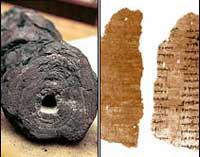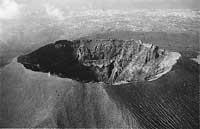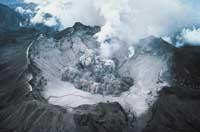Space technology to read ancient texts
2001/04/23 Galarraga Aiestaran, Ana - Elhuyar Zientzia
In the year 79 BC, the eruption of Vesuvius, under the ashes of Pompeii, also burned the manuscripts of that time. Experts working on decoding these texts take a long time to detect words in blackened papyri.

And it is that, although the lava left intact the papyri found in the house of Julius Caesar's father-in-law, in 1750, when they first saw them, they thought they were pieces of coal. Then they realized they were written, but they had to distribute the pages to each other. It was a long and difficult work, for which corrosive chemicals and saws were used. In the Museum of Naples there are about 1,700 separate and kept writings, but the words written in black ink are almost inappreciable in blackened skin, so few papyrus have revealed their secrets.
Now, to read these texts for over 2,000 years, researchers have the help of NASA technology. Thanks to the photographic system of luminous images invented by NASA to investigate the minerals of the surface of the planets, the writings appear clearly represented. The images are obtained by taking photos of each papyrus. To do this, to limit the band of light, filters are introduced in the lenses of the digital camera of high technology.
Photographers have used filters for a long time to filter images they don't want, but this system is more effective. Often the best results are obtained using the infrared, since with this light the ink appears brighter.
The multispectral imaging system has been used to decode religious texts found in a Byzantine church in Jordan and to detect what is written under the murals of a Mexican Aztec temple. It is now being used to read the texts of the library of the poet and philosopher Filodemo, and the University of Brigham intends to analyze the ancient texts preserved in the Vatican.

Gai honi buruzko eduki gehiago
Elhuyarrek garatutako teknologia





